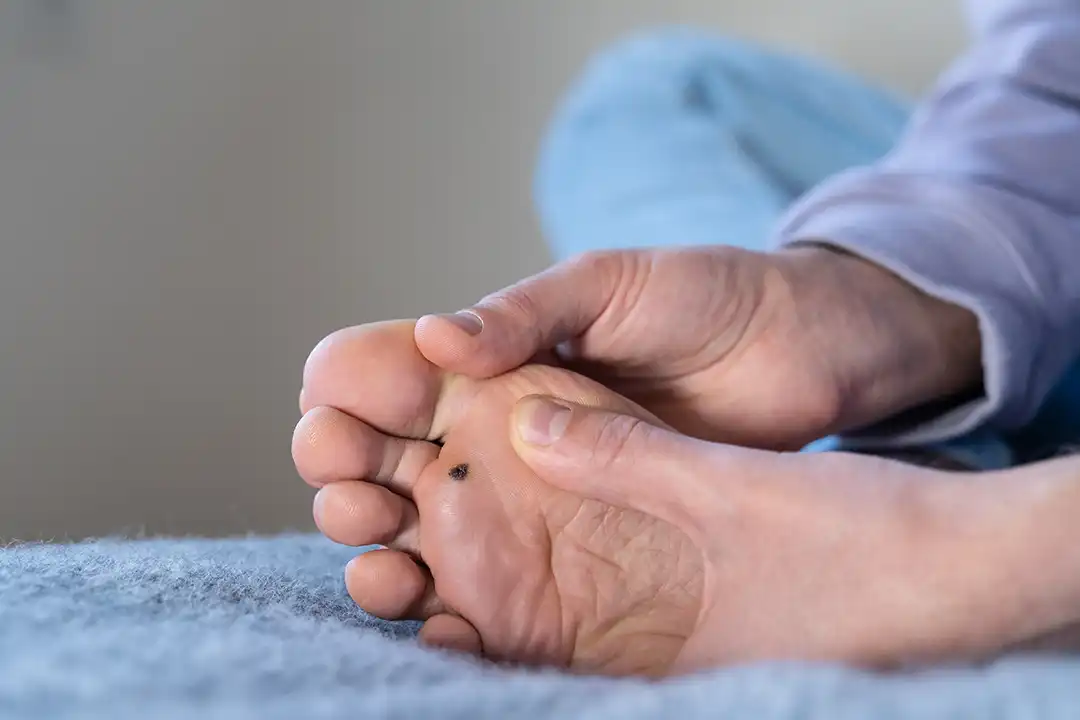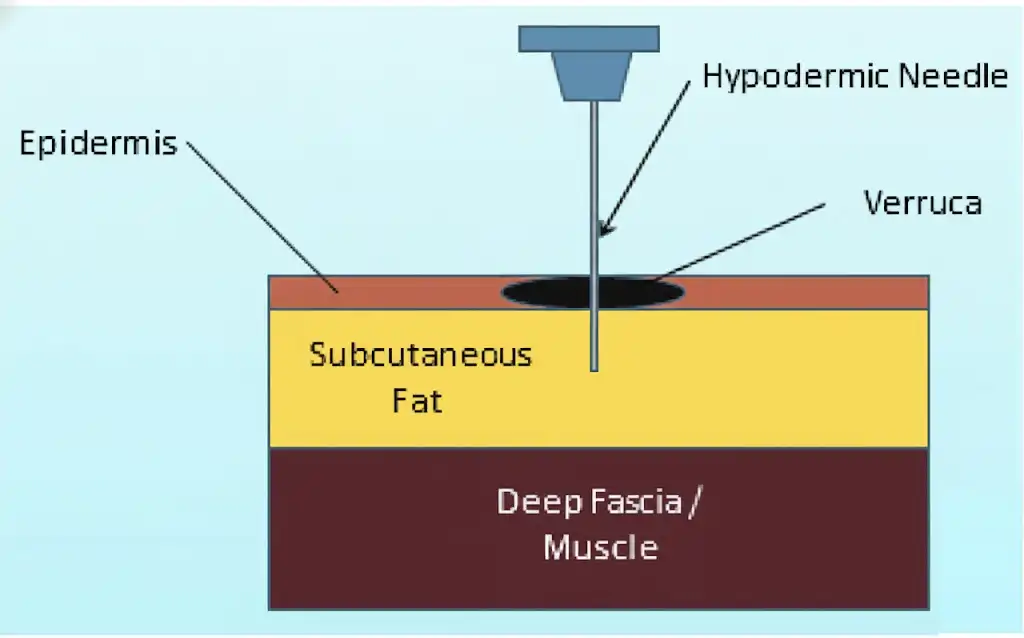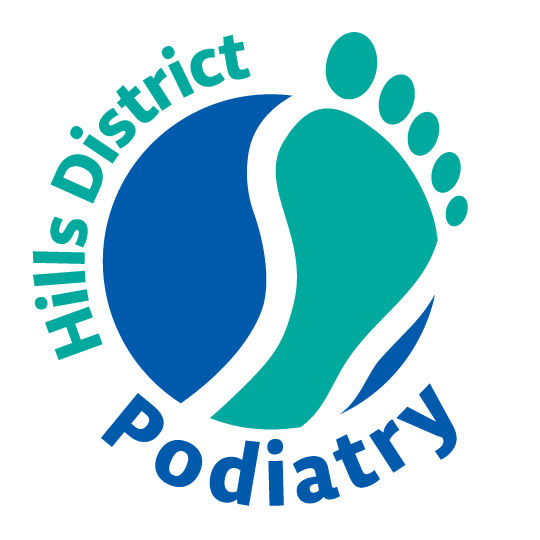Plantar Warts: Causes, Symptoms and Effective Treatment with Faulkner’s Needling
Plantar warts are one of the most common and frustrating foot conditions podiatrists treat. Caused by the human papillomavirus (HPV), these lesions can make every step painful. Here’s how to identify them — and how a specialised procedure called Faulkner’s Needling can help clear them for good.
What are plantar warts:
Plantar warts are harmless (benign) skin growths caused by the Human Papilloma Virus (HPV)—most often types 1 and 2. They typically appear on the weight-bearing areas of your feet, such as the heels or balls of the feet.
While some warts may disappear on their own within about two years, they can often become painful, unsightly, and interfere with walking or daily activities. If a wart persists, it may mean your immune system hasn’t yet mounted a strong response to the virus.

How does treatment for plantar warts work?
The most effective treatments aim to trigger your body’s immune system to recognise and fight off the virus. One highly effective option for stubborn plantar warts is a procedure called Faulkner’s Needling.
What is Faulkner’s needling:
Faulkner’s (or Falknor’s) Needling is a simple, cost-effective treatment designed to stimulate an immune response directly at the site of the wart. It’s performed by a podiatrist or trained clinician under local anaesthetic.

Demonstrating the needle technique
What does the procedure involve?
At Hills District Podiatry, we look beyond the painful area to find the real cause. Our assessment may include:
- Numbing the area with a small amount of local anaesthetic.
- Gently removing (debriding) the thickened surface of the wart.
- Using a fine sterile needle to puncture through the wart several times—enough to reach the deeper skin layers.
- Applying a sterile dressing for about 48 hours afterward.
- Follow-up reviews at 1 week, 1 month, and 3 months to monitor healing and results.
How effective is it?
Research shows excellent outcomes with Faulkner’s Needling:
- 69% complete resolution in one study (46 cases) [1]
- 87.8% cure rate in another study [2]
- 70.7% complete response and 6.1% partial response in a third [3]
Most patients find the procedure tolerable and report minimal downtime afterward.
If you’ve been dealing with a stubborn plantar wart that hasn’t responded to over-the-counter treatments, Faulkner’s Needling may be a great next step. Contact our clinic today to book a consultation with one of our podiatrists.
Frequently Asked Questions About Plantar Warts and Faulkner’s Needling
Plantar warts are caused by the Human Papilloma Virus (HPV), most commonly types 1 and 2. The virus enters the skin through small cuts or abrasions, often in moist environments such as public showers, swimming pools, or locker rooms.
Yes, they can be. HPV spreads through direct contact with the virus — either from another person’s wart or from surfaces where the virus thrives, like floors or towels. Wearing thongs or shoes in communal areas can help reduce your risk.
Some plantar warts do resolve naturally within one to two years as the body’s immune system recognises and clears the virus. However, persistent or painful warts often require professional treatment to prevent spreading and discomfort.
Faulkner’s (or Falknor’s) Needling is a podiatric procedure that uses a fine sterile needle to stimulate an immune response directly within the wart. The aim is to train your immune system to recognise and eliminate the HPV virus responsible for the wart.
Research shows excellent success rates — typically between 70% and 88% complete clearance in published studies. It’s considered one of the most effective options for stubborn plantar warts that haven’t responded to over-the-counter treatments.
The area is numbed with a local anaesthetic before treatment, so patients generally feel little to no discomfort during the procedure. Mild soreness or tenderness may occur afterward but usually resolves within a few days.
Most patients can resume normal activities shortly after the procedure. A sterile dressing is usually applied for 48 hours, and follow-up appointments are scheduled at one week, one month, and three months to assess progress.
Recurrence is uncommon after successful needling because the treatment trains the immune system to recognise the virus. However, re-infection can occur if you’re exposed again in communal wet areas or if other untreated warts remain on the feet.
It’s suitable for most healthy adults and older children, but not recommended for people with certain immune conditions, poor circulation, or allergies to local anaesthetic. Your podiatrist will assess your suitability during a consultation.
You should book an appointment if your wart is painful, spreading, hasn’t improved after several months of home treatment, or interferes with walking. Early treatment helps prevent further discomfort and infection.
References:
- Longhurst, Belinda, and Ivan Bristow. “The treatment of verrucae pedis using Falknor’s needling method: a review of 46 cases.” Journal of Clinical Medicine 2.2 (2013): 13-21.
- Baveja, Sukriti, et al. “Falkner’s needling technique for the treatment of warts: Minimum investment, maximum benefit.” medical journal armed forces india 78 (2022): S75-S81.
- Kumari, Pramila, et al. “Falknor’s needling method as a potential immunotherapy in palmo-plantar warts.” Indian Journal of Dermatology, Venereology and Leprology 85 (2019): 129.
